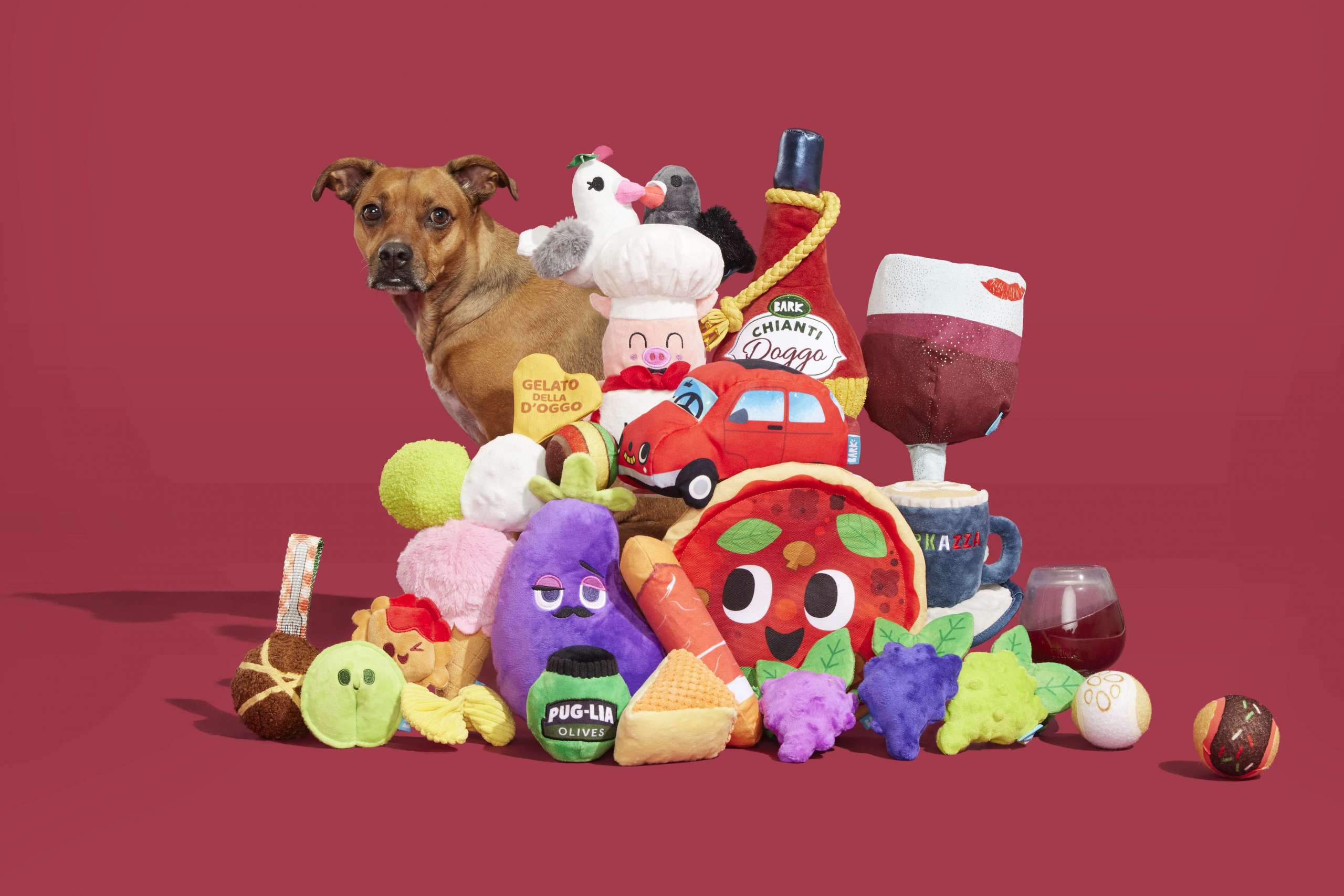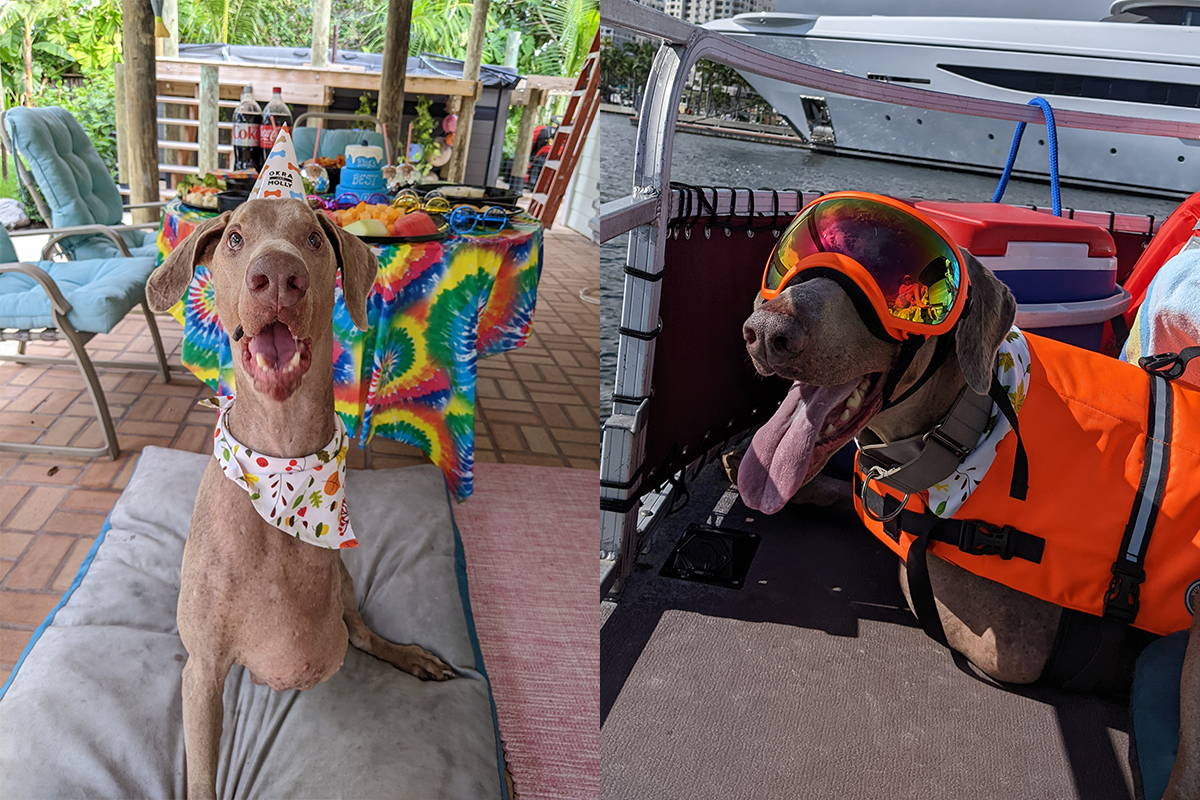Loose-leash walking is an essential skill—for you to teach, and your dog to learn! Walks should be fun, comfortable, and stress-free for everyone involved. No one likes getting dragged down the street doing a water skiing impression, but our dogs don’t come pre-programmed knowing how to walk on a leash without pulling.
Your job is to show them that playing sled dog won’t get them anywhere faster, and walking relaxed and by your side is the only acceptable behavior.
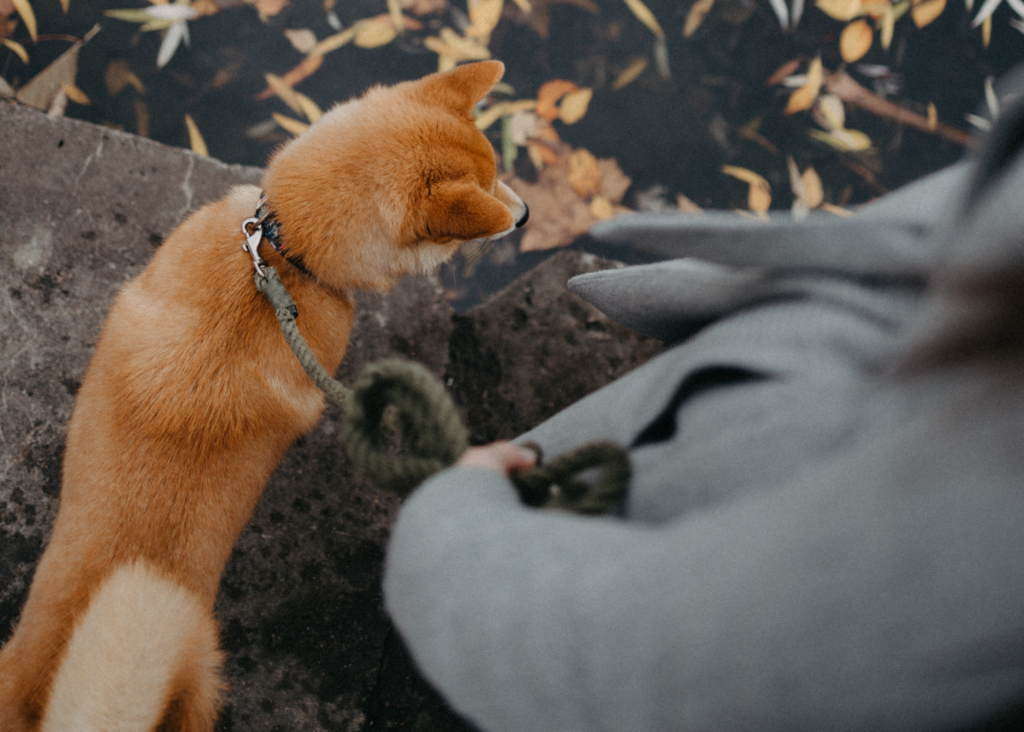

Why Do Dogs Pull On-Leash?
Dogs are curious and inquisitive; they want to engage with the world around them, especially when they encounter new sights, sounds, and smells on a walk. Some dog breeds are naturally more inclined to pull, but in general dogs pull because they want access to situations and things that they find interesting, including:
- Other dogs
- Water
- Food (no sidewalk chicken bones!)
- People
- Squirrels/birds/other small animals
- A promising scent trail
Start Loose-Leash Walking Training Early
If you have a young puppy, you’ll want to start setting the foundation for awesome leash skills right away. At its core, this means teaching puppies and dogs that they should focus on you when they spot something interesting, rather than immediately pulling toward it. You can even begin this training in your home!
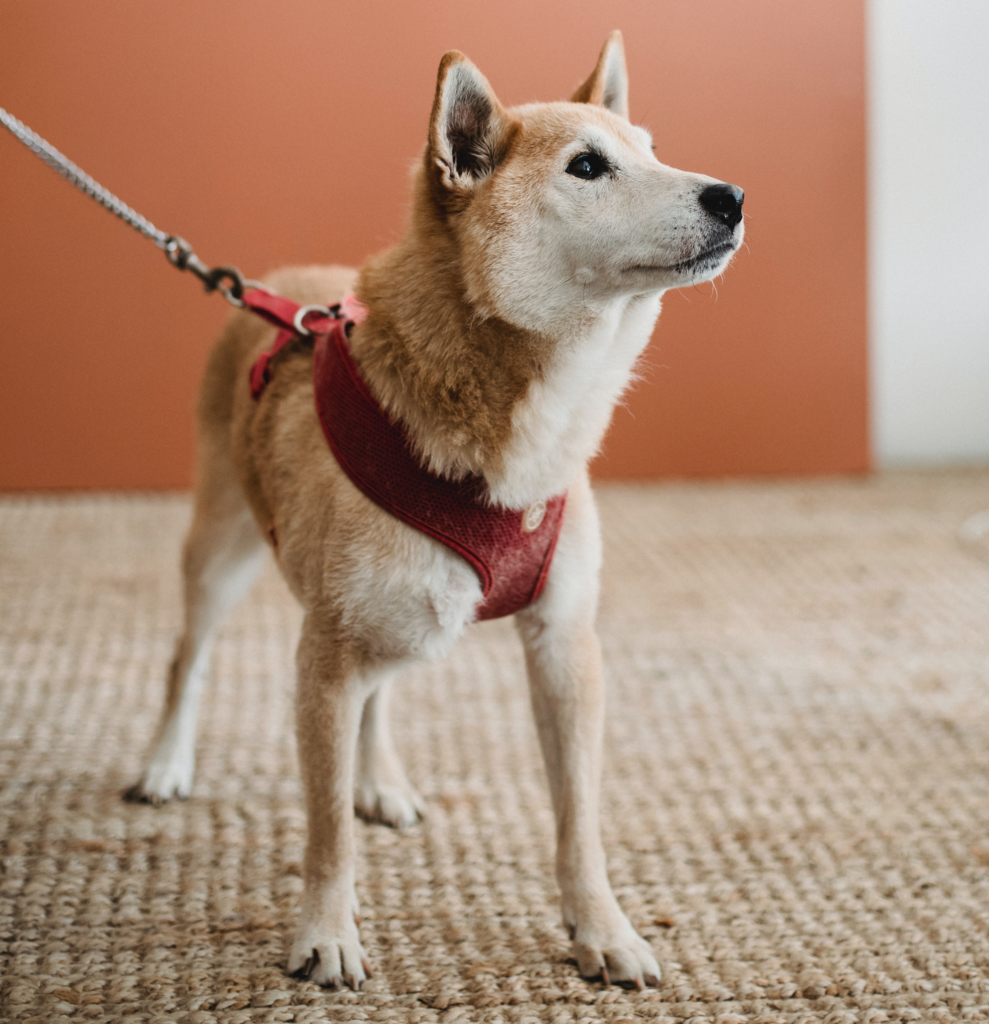

As they grow, you will always want to use a leash in areas that do not specifically give off-leash permission (i.e., dog parks)—it’s the law. Sometimes dogs instincts are stronger than their desire to be near you, which means it only takes one unfortunate mistake for things to go wrong.
Additionally, while your dog may be friendly, that isn’t always true of everyone else’s dogs. Be a courteous, responsible dog owner and avoid a potentially volatile situation. At the end of the day, good leash manners (for dogs AND humans) come down to the safety and well-being of your dog and others’.
What If I Have An Adult Dog?
If you’ve welcomed an adult dog into the family without stellar leash manners, it’s definitely not too late to establish those skills. Dogs of any age can learn that loose-leash walking is more fun than pulling. If your dog is part draft horse, it may just take a little extra time and patience—after all, they’ve lived their entire life thus far thinking that pulling is perfectly acceptable.
Related Article: Why Everyone Should Take Their Dog To Basic Obedience Training
Supplies You Need For Loose-Leash Training:
- Leash: A six-foot lightweight leash is best for walking. Avoid long retractable leashes—the thin cord can cause entanglement and injury if used incorrectly, and the excessive length means dogs can get a running start before (and if) you’re able to engage the locking mechanism, creating dangerous situations near traffic, other dogs, or people.
- Flat buckle collar and/or harness with a back clip
- Treats your dog gets excited about
- Toys your dog gets excited about: If your dog is not particularly food-motivated, toys or plain ol’ enthusiastic praise are the way to go.
If you have an older dog who already has a lot of practice pulling and it’s a safety issue while training, you may want to consider using a humane no-pull tool that takes the pressure off your dog’s neck, such as a:
- Front clip harness
- Head halter
When properly introduced and used, both should be comfortable for dogs to wear, and can help with maintaining safety and control during training.
How To Hold A Leash
Particularly if your dog is strong and tends to unexpectedly tug, you want to have a firm grip on the leash that won’t hurt your hands or arms in the process. If walking your dog on your left side:
- Hook the leash loop over your thumb on your right hand and fold it a few times into your hand to get the length you want. The last fold should come out on the bottom of your hand, near your pinky.
- If your dog needs more leash, you can open and close your hand, keeping your thumb through the loop. Your folds will drop easily drop free, and your grip will stay secure.
- Do not wrap the leash around your hands or arms, which could cause injury if your dog pulls suddenly.
- Use your left hand to hold a portion of the leash length closer to your dog (leave some slack between your two hands).
- Hold your arms at your sides as you walk.
- When stopped, either put a foot on the leash or hold it with both hands and close to your body, like a baseball bat.
How To Teach Loose-Leash Walking
The main goal with loose-leash walking is to teach your dog or puppy that hanging out next to you and paying attention to you while walking makes great things happen. To do this, we need our dogs to learn that you (the person on the other end of the leash) are so much more exciting and rewarding than whatever else is going on in your environment.
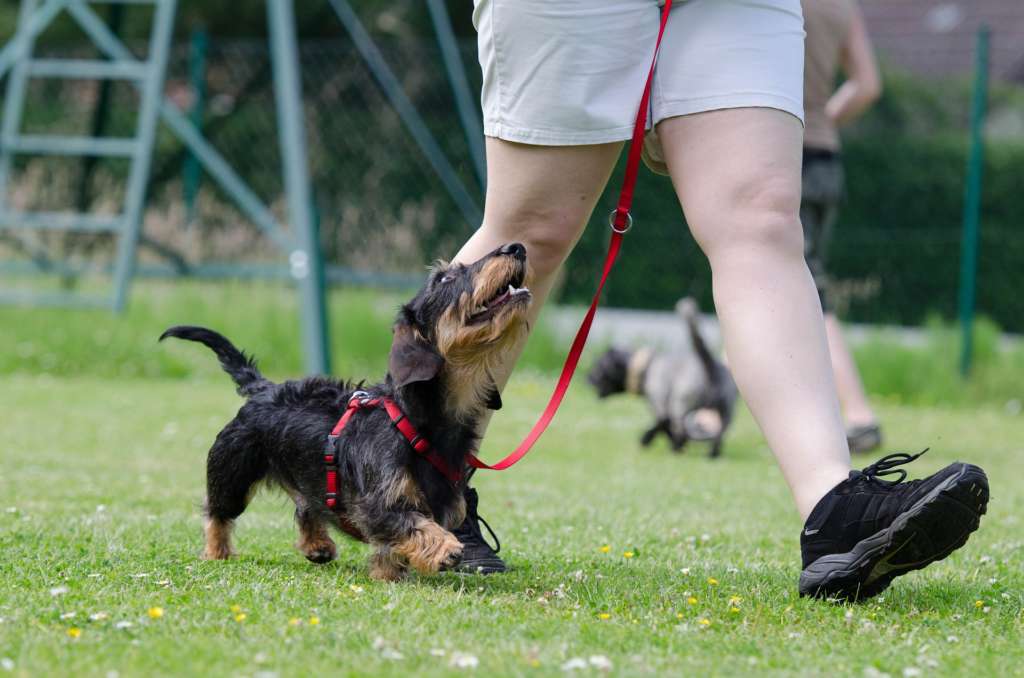

Avoid Giving Corrections
An old school way of teaching dogs to walk on a leash is to yank on their leash or give “collar pops” as a correction to cause pain or discomfort, and thus get them to stop pulling. This punitive method can not only harm your relationship with your dog, it also doesn’t actually teach them what you want them to do, only what you don’t want them to do.
Start Slow
Remember, your dog is learning this skill for the first time and will only benefit from patience. You want to first help them be successful walking in areas without a lot of distractions (even in your home) so that keeping their focus on you requires low effort. Try taking these step by step:
- Attach the leash to your dog’s collar or harness and get their attention with a toy or treat. When your dog looks at you, praise and reward with a treat or quick play session.
- Take a couple steps this time. When your dog looks or orients themselves toward you, praise and reward.
- Continue inside your home, taking a few steps at a time, praising and rewarding for that focus.
Gradually, you can build up to areas that are more distracting but still quiet, like in your yard or another low-distraction area. Repeat the above steps! Make sure your dog sees that you have treats or toys on hand so they know what rewards are in store.
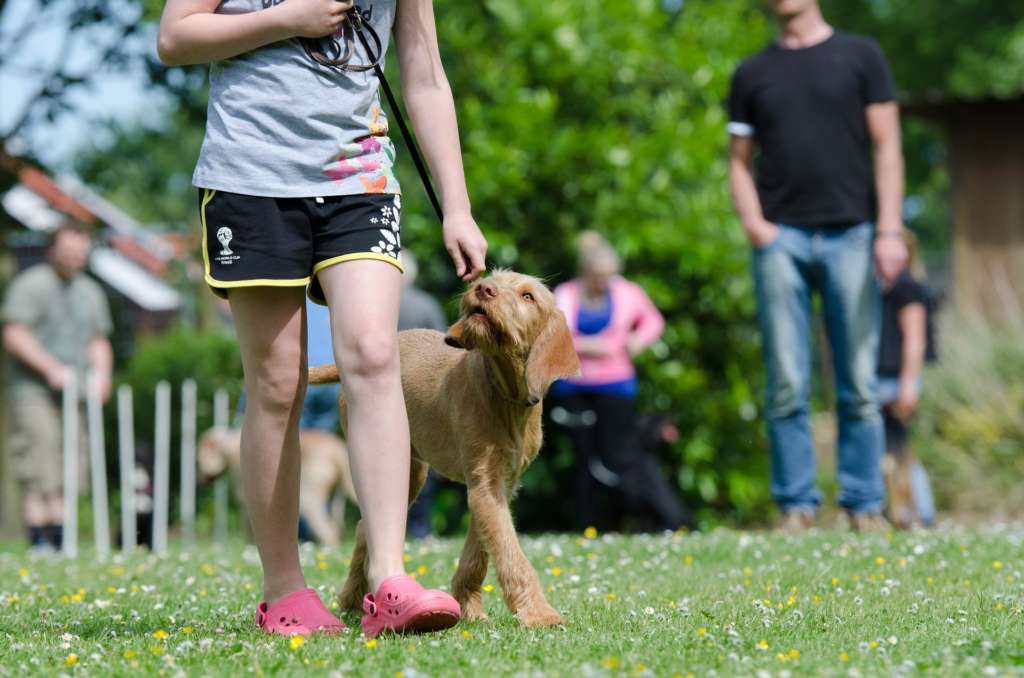

What If My Dog Is Not Listening?
If your dog does succumb to distraction and starts pulling, stop walking and wait quietly. When they look at you, even just a quick glance, give lots of praise to encourage them to move toward you. Follow up with more praise and that much-awaited reward!
Slowly Increase Distractions
Over time, stretch the time between rewards little by little, increasing the number of steps you take between praising your dog. As you advance to areas with more distractions, like through your neighborhood or a local park, you’ll want to back up and increase the rate of praise to keep your dog’s focus and build on the understanding that staying close and not pulling means they get treats.
As they become more experienced, you can begin to test their skills in more distracting areas, always praising for their focus and closeness to you. Eventually, you will both be able to walk just about anywhere, no leash burn on your hands and your shoulder firmly in its socket.
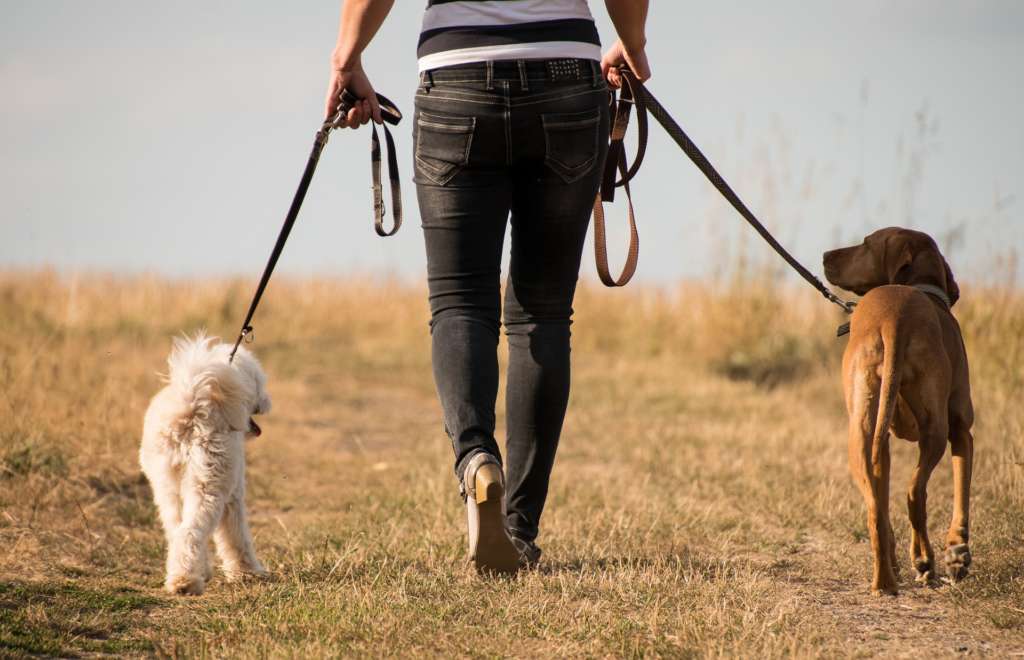

Is My Dog Leash Aggressive/Leash Reactive?
Sometimes the cause of pulling or barking on walks runs a little deeper than just a lack of manners. Seeing other dogs on leash, for example, can be frustrating; dogs can’t introduce themselves gradually like they might off-leash at a park (circling, sniffing, having the opportunity to display friendly body language). Instead, they immediately meet face to face, feeling your reflexive tightening of the leash, the pressure of the collar pulling at their neck, and perhaps you speaking in a tense voice—all a recipe for potential disaster. Sometimes, it results in aggressive behaviors.
Especially if dogs are friendly with other other dogs in different situations, this reactivity can behoove pup parents. Some short-term solutions can include:
- Avoiding other dogs as best you can, even if that means detouring around parked cars, crossing the street, or turning around to take a different route.
- Going for walks during “off” hours (i.e., earlier in the morning, later at night)
- If your dog is larger, carrying a light towel to cover their eyes; if they’re smaller, picking them up and doing the same.
- Using a head halter to more easily direct their line of sight.
- Whenever they display the behavior you want in the presence of their trigger, praise and treat!
If you find that your dog’s reactivity needs a little extra help, it is absolutely encouraged to find a certified trainer that focuses on positive-reinforcement methods.
Want a regular supply of super squeaky, crazy crinkly toys and drool-worthy treats for training? Click this link to sign up for BarkBox and get a FREE EXTRA TOY every month! That’s a $120 value if you choose a 12-month subscription.
Sassafras Lowrey is a dog trainer turned trick instructor turned writer who seriously loves dogs! She got involved with dog training as a teenager, but it wasn’t until her and her partner adopted a former street dog in 2011 that she realized she could combine her passion for dogs with her passion for writing! After looking into ways she could enrich her dog Charlotte’s life, and seeing other pet parents do the same, Sassafras decided to write books to help both dogs and their humans. Check out the following activity from her new book, Chew This Journal!



